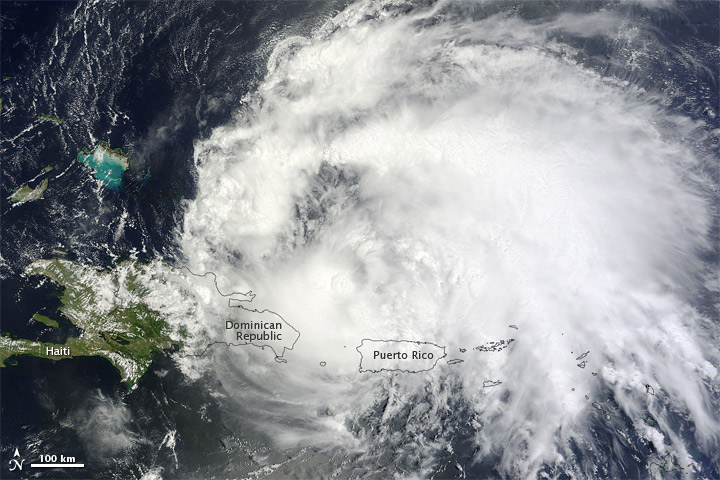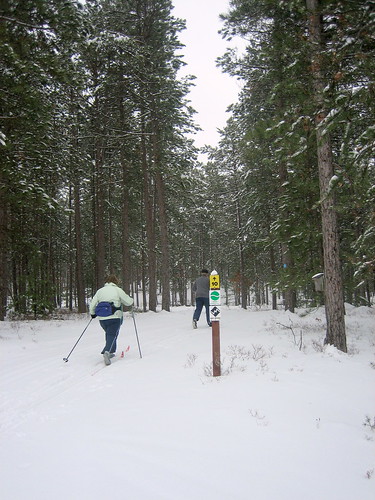I want to make my classroom the best learning environment possible. Most of my posts on this site focus on lessons, assessments, or ideas on how to improve the learning environment inside my classroom. Improving our individual teaching craft is one of the easiest places (not to say it's necessarily easy) as a teacher to effect change.
However, as I've worked towards improving what happens in my classroom I've frequently run into obstacles. These obstacles were primarily exterior to my classroom. Sometimes they were school or district policies, sometimes national or state requirements, and sometimes they were the result of how we, as a culture, have historically structured this thing we call "school." Most of these policies and structures were created with good intentions in an attempt to improve our schools and our children's education.
Given my generally negative experiences with "traditional" instructional models and structures, I've found myself more and more interested in systemic school reforms. How can we create modern schools and structures that leverage the advancements in technology and access to information to provide students with an education that prepares them to be active participants in our nation's democracy, economy, and society?
 It was no surprise when an editorial in our local paper titled Major Restructuring Recommended for Schools caught my eye. In it, the author briefly describes the Connecticut Association of Public School Superintendents (CAPSS) new report, "Recommendations for Transformation," a list of recommendations to transform the state education system "so it is able to meet the needs of students in the future." Naturally, I downloaded, read, and critiqued the full 36 page report (here's the official download link [pdf file], here's a version with my commentary [pdf file]).
It was no surprise when an editorial in our local paper titled Major Restructuring Recommended for Schools caught my eye. In it, the author briefly describes the Connecticut Association of Public School Superintendents (CAPSS) new report, "Recommendations for Transformation," a list of recommendations to transform the state education system "so it is able to meet the needs of students in the future." Naturally, I downloaded, read, and critiqued the full 36 page report (here's the official download link [pdf file], here's a version with my commentary [pdf file]).
My critique of the CAPSS recommendations
The report includes 134 individual recommendations for action across ten broad categories. I won't go into them all. Instead I'll give a brief breakdown of each broad category and get more specific around recommendations of particular interest.
The tl;dr version
This is a long article. For those of you thinking, "I'm can't read this whole thing. There is too much," let me sum up. Speaking in sweeping generalities, I applaud the CAPSS recommendations. In many ways the recommendations are progressive, forward-thinking, and focus on the best interests of students instead of on things that would be easy to implement or get through the political process. Recommendations such as competency-based advancement, standards-based assessments, and integrating out-of-school learning experiences into the formal education process suggest that CAPSS is interested in totally reworking what we mean by "school." This makes me happy. Too often reform movements are limited by the inertia of history and that-which-already-exists. CAPSS is clearly trying to overcome this inertia. Schools that followed the recommendations in the report could be student-centered environments that have a laser-like focus on student learning, support and integrate learning experiences that occur outside the classroom, remove conventions of little educational value (e.g. letter grades, traditional homework, and adult-friendly-but-child-poor assessments), and make schools an intrinsic part of their community.
And yet CAPSS puzzlingly makes recommendations that would make schools larger, less personal, and less a part of their community. Consolidating districts might save some money- which is an important consideration- but this seems to fly in the face of entire other sections of this report (For example, Section 2: Make it Personal; Section 4: Retool Assessments & Accountability; Section 8: Involve Students & Parents). Creating fiscally sustainable school districts is important, but eliminating small community schools in favor of large regional schools fosters disconnect between the schools and their community, students skating through schools unknown by their teachers, and an overall less personalized educational experience. Furthermore, many recommendations are so general that they're simply platitudes without any real meat to them (i.e. "Engage parents as partners in their children's education."). More detail and explanation is needed as to exactly what many recommendations are actually recommending. Lastly, how about some references? Surely (hopefully) the CAPSS group that created the report relied on more than the four citations included in this report- three of which are statistics on current educational practices. Nowhere do they cite sources to support their positions- either in this report, on their website, or any other report provided at their website.
I think CAPSS took a step in a positive direction by making many forward-thinking recommendations for the future of education in Connecticut. While none of these recommendations are binding, it heartens me to see an organization of this sort making progressive recommendations. It gives me hope there will be enough momentum to effect some real and positive educational reform in the near term. However, portions of the report conflict with the overall progressive theme- pointing towards deep elements of hesitation toward the large- and in my opinion needed- education reforms.
If you'd like a more detailed breakdown of the 10 categories of recommendations made in the CAPSS report, read on!
1. Raise the Bar
There are essentially two recommendations here: (1) Create "ambitious, focused, and cohesive" education standards, and (2) provide a system that measures student learning and promotes students through school based on content mastery instead of seat time.
- Standards. Question: There already are state education standards, how are these standards different? Are these different than the Common Core Standards? Further, the recommendations specifically focus on standards for "college and career readiness." Those are important goals, but I'd also like them to focus on helping students become effective participants in a democracy. On the whole I'm skeptical of the standardization movement. The report spends a lot of time recommending greater flexibility. In my experience standards tend to inhibit flexibility. Have students who are really interested in a topic not included in the standards? Sorry, no time for that- it's not in the standards.
- Content mastery. This is one of those bold recommendations that I love. Essentially, they support the idea that as soon as a student shows mastery of a topic they can move on to a new topic. 13 years in a classroom does not necessarily make an education. In this model, students would be able to advance more quickly or more slowly depending on their individual content mastery- they wouldn't have to wait until the end of the year to move on to the next topic. This is essentially standards-based grading on systemic steroids. However, they fall short on proposing what School would look like under this system. How would mastery be determined? How does it impact the organization of classes at schools? These are big questions that need some serious thought for this to be taken seriously.
2. Make it Personal
This thread focuses on creating student-centric learning environments. Of any of the 10 sections, I like these recommendations the most. The two main ideas in this section:
- Advance students based on mastery. This restates some ideas from the last section. I still like it. They're still vague on details, offering only, "Establish flexible work schedules," and "Allow credits to be awarded based on mastery." I have a hard time visualizing how this would work in reality, but perhaps that's because I've spent the last 27 years in the existing system. I'm worried by the recommendation to develop a variety of assessments and projects to allow students to demonstrate mastery. This sounds like they'd be state-standardized affairs, which if they're anything like existing state-standardized activites, would be horrible. These should be developed locally (while being shared publicly for other educators) based on individual student needs.
- Flexible learning environments. Yes. Please recognize that plenty of valuable learning takes place outside school. The integration of this informal learning with our formal education is much needed. This should go beyond counting a family trip to the Grand Canyon as an educational experience. If a student can diagnose and fix a car's electrical system, spending three weeks in a classroom learning about basic series and parallel circuits is a waste of their time. Schools should partner with and validate our students' out of school educational experiences.
3. Start with Early Childhood
This isn't my area of expertise, but I think the proposal to provide quality preschool for all children starting at the age of three is one of the biggest no-brainers in education reform. The payoff to society don't manifest for nearly two decades, but there is a seeming wealth of research that suggests preschool is a very good thing. I have some concerns with the recommendations similar to "Develop a system of accountability for providing language-rich, challenging, developmentally appropriate and engaging reading and mathematics curricula." The focus on reading and math smacks of No Child Left Behind, and suggests an emphasis on tightly structured learning environments. In the words of Alfie Kohn:
...the results are striking for their consistent message that a tightly structured, traditionally academic model for young children provides virtually no lasting benefits and proves to be potentially harmful in many respects.
4. Retool Assessments and Accountability
Now we're getting into some meat. The CAPSS report suggests standardized testing should be de-emphasized. I'd be willing to bet they'd suggest eliminating standardized tests as we know them were it not for the current national education environment. Props to them for that.
Here's a selected summary of their suggestions: (1) Provide a variety of assessment formats, (2) Assess students as they're ready to be assessed (instead of everyone at the same time), (3) Get assessment results back to students & teachers quickly so they inform instruction, and (4) Make the goals of all assessment transparent. It seems like they're saying one thing here. Yup, it's Standards-Based Grading.
In fact, they do mention SBG by name in this section, but they recommend making it "part of assessments." I'm a fan of SBG (as evidenced by previous posts), and I think this is a stellar recommendation.
I do have some hesitations with their recommendations, despite their SBG-like nature. For one, it's pretty clear from the language used they're not discussing day-to-day classroom assessment. They're discussing a new form for state standardized tests. I'm unclear on what this would look like, but it does sound like an improvement over the current system, though I'm skeptical it would come to pass in this improved manner. Another hesitation rests on the description of incentives for high performing schools. The report clearly recommends moving away from punitive measures, yet in my mind, providing incentives to high-performing schools is nearly indistinguishable from punitive measures against low-performing schools. Finally, the report lists subject areas for "base academic accountability." I take that to mean, "These are the subjects that will be assessed," or perhaps more clearly, "These are the subjects we think are important (things that are valued are assessed)." Notably absent are the arts and physical education- meaning the cuts to art and phys. ed. programs we see happening today are likely to continue were these measures put into place.
5. Offer More Options and Choices
Or, the section with the title that most poorly represents its contents. A better section title? "Consolidate School Districts." Their basic argument seems to be that having the current (supposedly high number of) 165 Connecticut districts creates an environment where it is difficult to align state and local initiatives, is economically inefficient, and fosters racial and ethnic isolation. While I agree that you can save some money by consolidating services like busing or food service, you also lose a connection with the community when the district encompasses many, many communities. Having worked in both small and large districts, the small district was much more connected to and valued by the community. It may be more expensive to have small community districts- and that's not a small obstacle- but it would be worth it. It should be noted that reworking the state education system in the manner recommended by this report would also be expensive. In addition smaller districts would help schools be more flexible, personal, and transparent. Those adjectives would be a fair summary of the recommendations of this entire report, so why include this section?
6. Reform Leadership
This section makes a lot of recommendations about the relationship between the State Department of Education and the Commissioner of Education as well as the roles of school boards and superintendents. That's a little bit outside my area of expertise, but I do like this statement from the introduction to the section:
Currently, organization and policy making for education are based on bureaucratic assumptions of hierarchy, centralized decision making, standardization and inspection. These characteristics limit individual discretion, depress creativity and foster stasis, not change.
That certainly describes my experience teaching in Connecticut. Despite completing my Master's in Secondary Education project by designing and implementing a student-centric, student-driven project, I was told I couldn't continue the project unless all the science teachers wanted to use it. That's not exactly how one fosters innovation and creativity...
7. Boost Quality
This is a huge section with 26 recommendations for action ranging from incentives for attracting quality teachers, to improving teacher education and professional development, to revamping teacher tenure as we know it. I'm going to limit my analysis to the recommendations for professional development and teacher evaluation. I think restructuring the current tenure system is a major issue that deserves discussion, but that'll have to happen in another post so it doesn't turn this already lengthy review into a ridiculously long review.
- Professional development for teachers.
- The report (rightly, in my opinion) makes many recommendations related to preparing pre-service teachers and helping new teachers grow as educators. One of my favorite recommendations suggests structuring a teacher's first year in the classroom as an internship with regular coaching and mentoring by master teachers. If it were up to me, I'd have new teachers carry half of a teaching load, giving them plenty of time during the day to observe other teachers, review and revamp instruction and assessment with a mentor, and generally work to improve their craft. Likewise, the mentors should have a reduced teaching load so they have time to both observe and meet with their mentees during the school day. The current system where exactly zero time is allocated for new teachers to review and reflect on their time in the classroom is a horrible model if we want new teachers to show improvement.
- A second recommendation states that districts should provide professional learning opportunities for teachers as a part of their regular job- and schedules should be configured to give teachers time to collaborate with their peers. Again, I agree. If you value professional learning and improvement, you should schedule time for it- not make it only something teachers do on their own time (which most do, but it's such a valuable thing schools should be purposefully providing opportunities for their teachers). However, a word of warning: I've taught in a school where the schedule was changed to provide teachers with 70 minutes of "collaboration time" each week. Teachers (including myself) were genuinely excited for this time to share lessons, have quick professional development sessions, and critique instruction and assessment. Instead, it was mandated from above that the "collaboration time" be used solely to analyze student standardized test-prep results. While I understand the importance of standardized tests in our current system, the cost was the loss of time for teachers to share their expertise with each other, learn how to effectively integrate technology, and design cross-curricular projects- all things teachers were excited to use that time to do. The moral of the story is that simply having collaboration time in the schedule doesn't mean it's being used effectively.
- Teacher evaluation. As it is, the teacher evaluation system as I've known it is in need of reform. Last year I was observed by an administrator three times- each observation lasting approximately 70 minutes. Outside these official observations, administrators spent about 30 minutes in my classroom throughout the year. Okay, so that's a total of 240 minutes of observation for the entire school year by those who evaluate my performance. For some perspective, I taught four 70 minute classes each school day, and there are 180 school days per school year. That works out to 50,400 minutes of instructional time each school year. My evaluations were based on 240 out of those 50,400 minutes, or 0.48% of the total instructional time. It makes me nervous to think I'm being evaluated from such a position of ignorance. The recommendations by the CAPSS include creating a standards-based evaluation system with regular performance reviews and including peer review as part of the performance review. As long as "regular performance reviews" includes frequent, informal observations by evaluators and "including peer review" can be expanded to provide students and parents a voice in the evaluation, then I think the recommendations are on track.
8. Involve Students and Parents
Schools give a lot of lip service to including parents and students in the education process. I've never been part of school that has done a good job at doing this. I've known teachers who were really good individually at involving parents in their classrooms and other teachers who provide students a large voice in their own education. Beyond the classroom level the furthest extent I've seen a district or (high) school involve parents is to invite them to serve on committees with little influence that meet at times untenable for most working adults' schedules.
I have no problems with the recommendations in the CAPSS report...other of course than the fact that they're so non-specific that they're just platitudes: "Engage parents as partners in their children's education," or "Create structures that encourage family involvement." Yes, those are good things- but what suggestions do you have for how to do these things?
Let me offer a few quick suggestions.
- Use technology to make learning and school happenings more transparent. How? Have administrators start a blog or create an online newsletter that is updated regularly sharing goings on at the school. Share a photo a day. Invite teachers and students to do the same. Let students share their learning and reflections through student blogs (or evening events where students show off projects, etc.). In my mind, these things are the low hanging fruit- They're easy to implement and can cost nothing (depending on the tools used).
- Form collaborations with people in the community. Examples?
- Maybe you have an assisted living community near the school. That's a community with a huge amount of knowledge, skill, and disposable time. Provide transportation to retirees so they can read, mentor, advise, or provide academic support to students.
- Create a community garden on school grounds that "rents" plots to community members. Have students run the administration and marketing of the community garden. Sell the fruits (& vegetables) of the gardens' labor at a farmer's market in the school parking lot on the weekends.
- Start a hackerspace in the school for the community. Students in class such as design, computer science, engineering, or any other class where they need to build stuff could be given free memberships and all other students can become members for discounted rates. Hackerspace members can access it all day. Let advanced students lead workshops for community members.
Ideas like these take more effort and money- but in the end the rewards may pay for themselves. In essence, make the school a community learning center and let the community share its skills and knowledge with the students and vice versa.
9. Leverage Technology
This section is surprisingly short (considering the topic), and the recommendations focus around two main ideas:
- Students and educators should have access to educational resources at any time. They don't quite recommend making broadband internet access a universal right, they do hint at it. I'd agree- though I'm not sure how that gets implemented. The inexpensive computers available today make computer ownership possible for even quite poor families. Paying $30-$50/month for internet access is much less likely to fit into tiny budgets. I also like the recommendation to "leverage online environments [...] for two-way communication, feedback, and collaboration..." Those environments are widely used today (in the form of social network sites), but more often than not are blocked by the schools themselves. It'd be nice to see schools embracing the power of these tools instead of hiding from them.
- Keep the technology infrastructure up to date. Of course I agree with this, but it's a matter of money. Even though reasonably powerful computers are becoming less and less expensive, it's still a major cost. I'd like to see schools use free and open source software (Open Office instead of Microsoft Office, for instance) or free resources such as Google Apps for Education. These would help keep software costs down and allow for money to be allocated more wisely elsewhere.
.
10. Continue the Transformation Process
The report makes suggestions on how to avoid reform stagnation at both the state and district level. Several of the recommendations focus on items like changing statutes or education budgets. I don't have too much of an opinion on these items (due to my own relative ignorance on the topics more than anything else). However, two of the recommendations contain a similar idea that I find extremely attractive. Essentially, they say: Let innovators innovate.. One suggests districts can receive waivers for state statues and regulations to experiment with new ideas to improve student learning. The second recommends providing systems for teachers and principals to experiment with innovative practices.
If you let smart people do creative things- even if those things are outside the state's or school's "mandates"- you'll end up with a ton of great ideas that help everyone in the end (see: Google's 20% time). Instead of alienating smart people and ultimately driving them out of the education sector, you'd be empowering them and attracting more innovation.



 Okay, so there is more to science than just curiosity & skepticism- but if my young students leave my class with that understanding, I'd be a happy human.
Okay, so there is more to science than just curiosity & skepticism- but if my young students leave my class with that understanding, I'd be a happy human. I tend to skip through reading your blog posts when I'm busy. If I'm lucky, others of you will post tweets or blog posts pointing me back towards the good stuff I've missed
I tend to skip through reading your blog posts when I'm busy. If I'm lucky, others of you will post tweets or blog posts pointing me back towards the good stuff I've missed